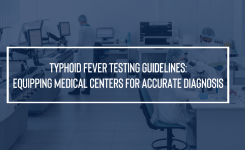Blog
How i-STAT Enhanced Cardiopulmonary Bypass Surgery at Augsburg Hospital
Ensuring patient safety during cardiopulmonary bypass (CPB) surgery hinges on accurate and timely monitoring of activated clotting time (ACT). At Augsburg Hospital in Germany, the integration of the i-STAT System has brought significant improvements to ACT testing, enhancing precision, efficiency, and overall patient care. This article explores the rationale, methodology, and outcomes of implementing the i-STAT System in comparison to traditional ACT testing methods.
Overview of Augsburg Hospital
Located in Augsburg, Germany, Ausgburg Hospital is a comprehensive medical center with 25 clinics and institutes including the Clinic for Heart and Thoracic Surgery. With over 5,400 employees and more than 1000 CPB operations performed on site.
Implementing the i-STAT System
For years, the Augsburg Hospital relied on traditional mechanical methods for Activated Clotting Time (ACT) testing in its cardiovascular operating room (CVOR). The switch to the i-STAT System was driven by these key factors:
Integration with Conworx System: Enhancing connectivity with Conworx Technology, which Siemens Healthineers acquired for advanced POC testing data management.
Improved Efficiency: Streamlining testing processes to reduce workload and improve patient care.
Reduced QC Workload: Utilizing a single liquid solution for all instruments and electronic documentation to minimize interruptions.
Consolidation of POC Technology: Standardizing testing technology across different clinics.
Paperless Documentation: Eliminating manual paperwork to enhance verification and documentation process.
Challenges with Traditional ACT Testing
Traditional ACT analyzers often lead to highly variable results, requiring re-testing and raising concerns about the accuracy of the test results. Periodic quality control (QC) checks interrupt patient testing, and inadequate centralization QC of POC methods prevents effective testing and maintenance.
Methodology
The i-STAT System was compared to the Hemochron Signature+ for Activated Clotting Time (ACT) testing. Both systems were configured for pre-warm setting, and duplicate testing was performed on both systems for method comparison samples. Deming regression calculations were used were used to evaluate the results.
Results
Efficiency and Customization
Electronic QC: The i-STAT allows for efficient QC in accordance with the guidelines if the German Federal Medical Council, without interrupting testing.
Customization: QC processes are easily customizable, ensuring adherence to regulatory standards.
Single Liquid Solutions: Simplified QC procedures
Digital Documentation: Results are electronically documented and integrated with the Conworx POCcelerator, eliminating the need for paper records.
Precision and Reliability:
Correlation: The i-STAT results strongly correlate with those from the Hemochron Signature+, providing reliable ACT measurements within the therapeutic range.
Method Differences: The i-STAT uses a unique biochemical method for Activated Clotting Time (ACT) testing, measuring the conversion of a thrombin substrate, leading to more consistent results.
Precision: the i-STAT System demonstrated a coefficient of variation (CV) of <55%, indicating high precision compared to the comparator product V of <10%
Discussion
The i-STAT System’s built-in QC and customization features make it compliant with the German Federal Medical Council’s guidelines, streamlining the documentation and verification process. Unlike traditional ACT Testing devices, the i-STAT minimizes interruptions in patient testing and integrates seamlessly with hospital IT Systems.
Conclusion
The implementation of the i-STAT System in Augsburg Hospital has revolutionized Activated Clotting Time (ACT) during Cardiopulmonary Bypass (CPB) surgery by:
Providing reliable, precise ACT results, enhancing clinician confidence and patient care.
Optimizing patient safety through precise biochemical ACT testing and eliminating testing interruptions.
Enabling seamless integration with hospital IT systems, streamlining workflow, and maximizing efficiency.
Simplifying integration and implementation within CVOR departments.








